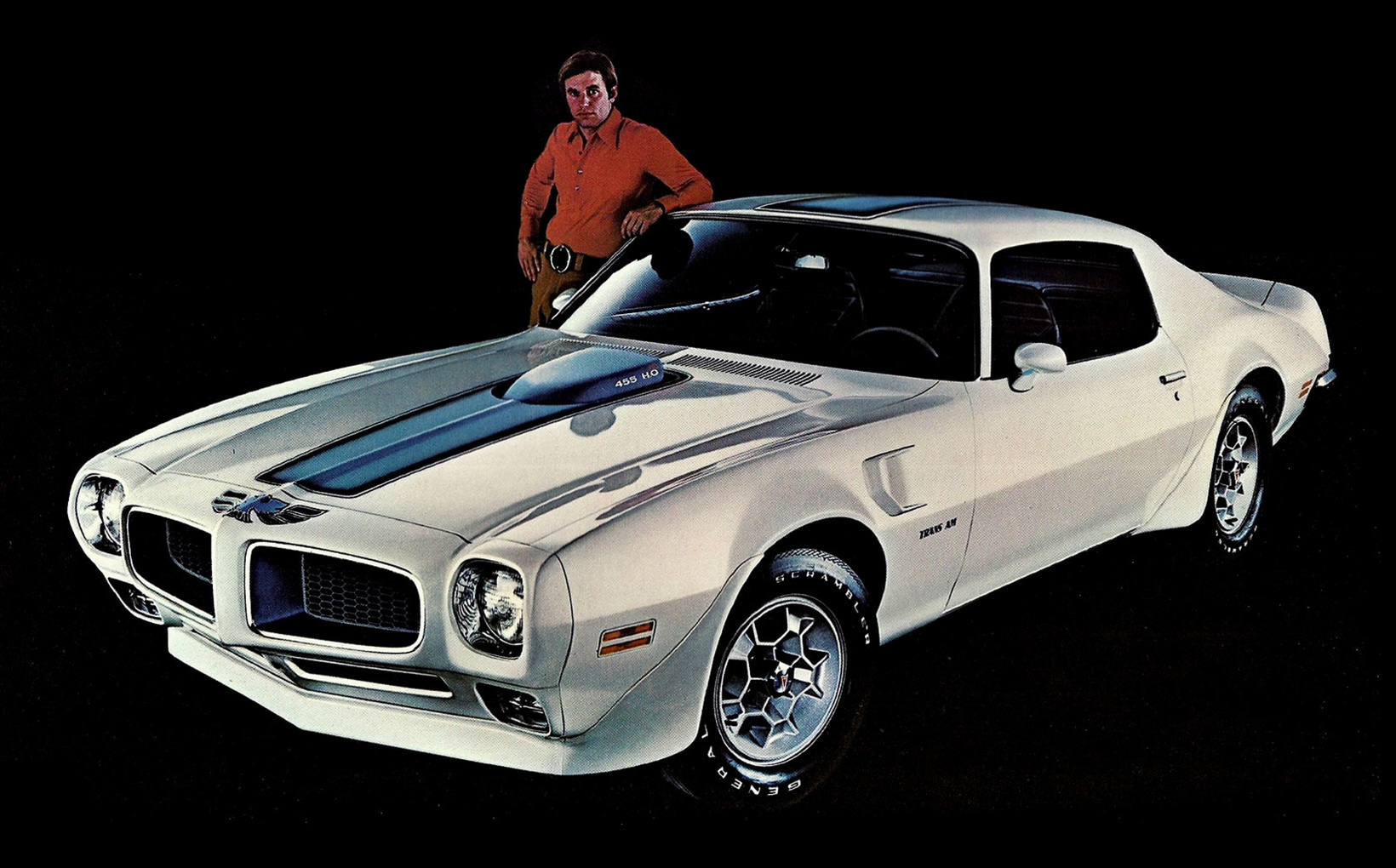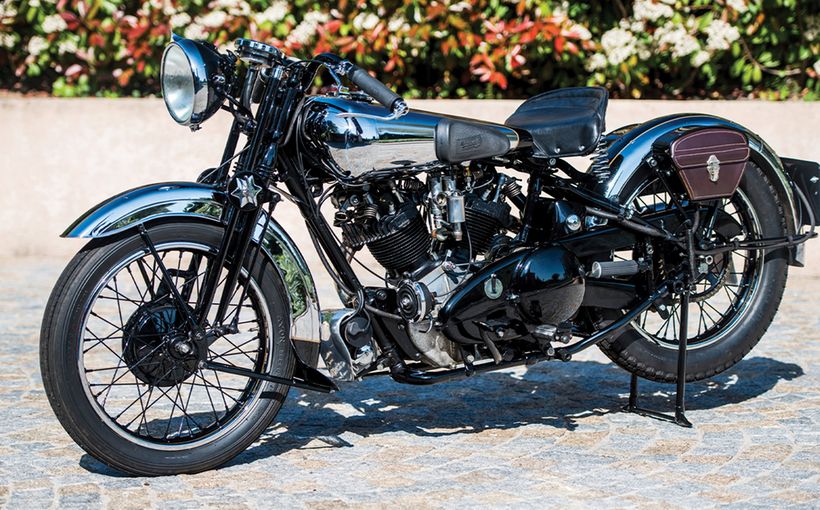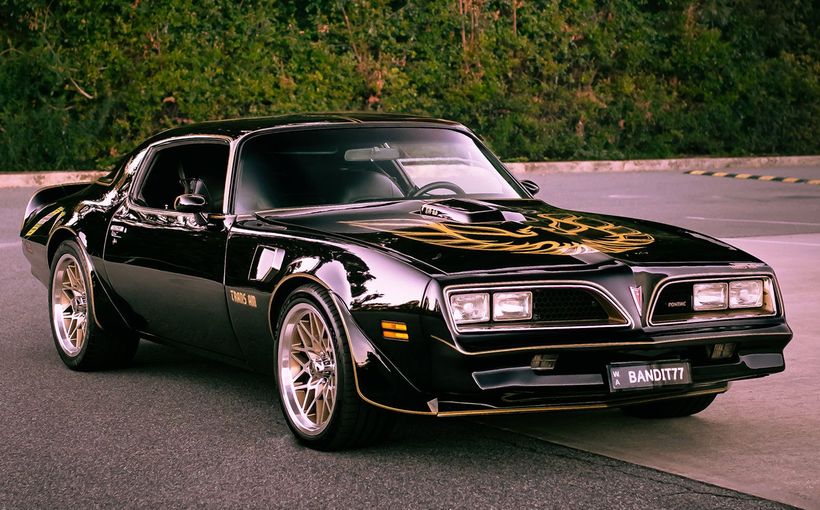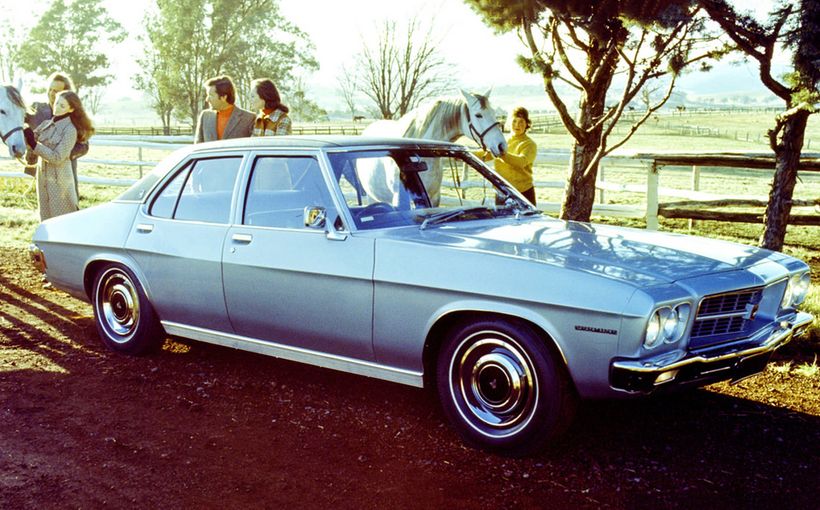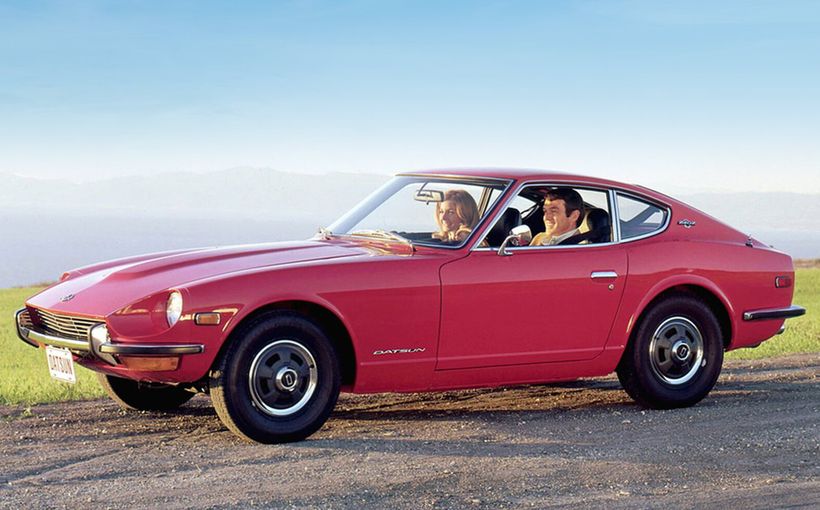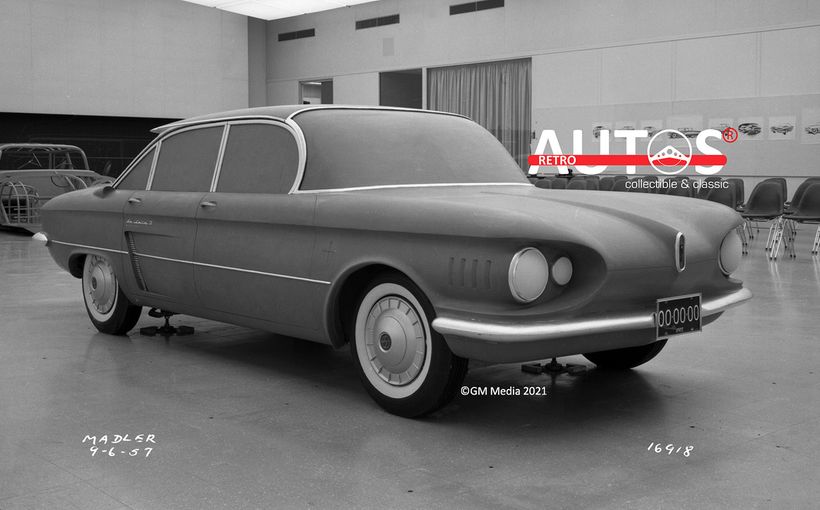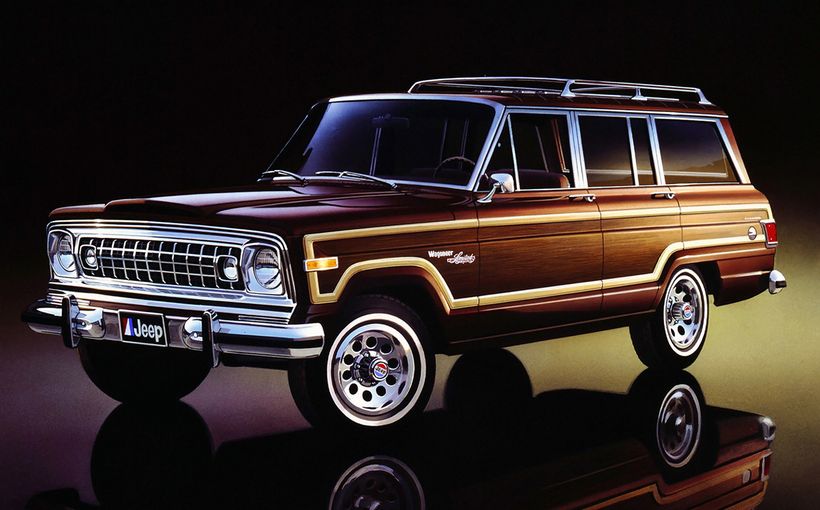Pontiac Firebird: GM’s Powerful and Stylish Hollywood Icon

The Pontiac Firebird and Chevrolet Camaro shared General Motors’ F-body architecture from their launch in 1967 to their demise in 2002. Even so, the Firebird’s big engines, handsome styling and unique character attracted not only a loyal customer base but also movie and TV producers who immortalised it on screen.
As star of the smash-hit 1970s car-chase movie Smokey and the Bandit, along with popular TV series The Rockford Files and Knight Rider, the Pontiac Firebird’s status as an American muscle car icon is beyond question.
However, away from the Hollywood glamour, the Firebird’s life was never an easy one. Despite Pontiac’s admirable determination to differentiate the Firebird from the Camaro, working within the corporate constraints of General Motors, the Firebird was outsold by its Chevrolet sibling.
Put simply, it was perceived as a more overtly styled, slightly plusher and more expensive version of the Camaro, for which the majority of F-body buyers was not enough to pry them away from their resolute allegiance to the bow-tie badge.
The Firebird was also created with initial resistance by the Pontiac Motor Division. Under the young and dynamic leadership of John DeLorean, who played a decisive role in creating the original muscle car, the Tempest-based 1964 GTO, Pontiac prided itself on bold engineering advances and a sporty (dare we say it) European character. A leader, not a follower.
Although GM was embarrassingly late in responding to Ford’s Mustang, DeLorean had visions of a Corvette-style sports car with unique Pontiac DNA to spearhead GM’s response. However, management saw Pontiac’s proposal as more of a threat to Corvette sales and rejected it.
What GM wanted instead was a Pontiac derivative of Chevrolet's new Mustang rival (later named Camaro) due for 1967 release. Ford’s Mercury division was developing a more upmarket interpretation of the Mustang called the Cougar for ‘67 - so GM wanted a Pontiac equivalent.
The Firebird was born.

Image: Pontiac Motor Division
First generation: 1967-1969
Unlike the Cougar, which although sharing Mustang mechanicals had a longer wheelbase and unique styling, the Pontiac Firebird was clearly a Camaro clone when launched in February 1967, about six months after its Chevrolet sibling. The Firebird nameplate, first used on turbine-powered GM show cars in the early 1950s, had been dusted off and redeployed.
The Camaro and Firebird were both available as hardtop and convertible and shared the same body shape from the firewall rearwards, with a distinctive ‘Coke bottle’ hip line. And both rode on the same semi-unitary F-body platform with 108.1-inch (2764mm) wheelbase.
The Firebird was slightly longer thanks to its unique front-clip and chrome grille surround, which neatly incorporated four headlights, the front bumper bar and a sharply-pointed ‘beak’ you’d expect on such a fiery bird. Thin-slotted tail lights echoed the contemporary GTO.
It was also slightly heavier than the Camaro due not only to its extra length but also the weight of the Pontiac V8. Yes, even in the late 1960s, GM divisions were still producing their own engines, which PMD did until 1981.
If Pontiac was annoyed at having a new car which looked a lot like a Chevrolet, it was also less than impressed with the new semi-unitary F-body which had been designed and built down to a unit price for mass production with some obvious engineering compromises.
For example, the F-body was so lacking in torsional rigidity in convertible form that Pontiac and Chevrolet resorted to fitting four large oil-filled dampers between subframe and body to reduce vibration and harshness. However, as each of these dampers weighed 16kg, the convertibles were considerably heavier than the hardtop versions.
Another glaring F-body flaw was the live rear axle design, with single-leaf springs that were grossly inadequate for putting big power to the ground. Pontiac’s solution was a pair of adjustable traction bars for all high-powered engine options to tame fearful spring wind-up and axle tramp. There were also unique changes to spring rates, shocks and ride height.
Firebird offered five model grades and a mind-boggling range of factory options. The base Firebird had Pontiac’s 230cid/3.8 litre SOHC inline six with (gross) 165hp (123kW) while the hotter Firebird Sprint bumped that up to 215hp (160kW) with a four-barrel carb.

Image: Pontiac Motor Division
Next came the Firebird 326 with Pontiac’s two-barrel 326cid/5.3 litre V8 (a small-bore version of the GTO's 389) packing 250hp (186kW) or the hotter Firebird four-barrel HO (High Output) with 285hp (213kW). Transmissions included three-speed manual column and floor-shifts, four-speed manual floor-shift and two-speed auto.
Top of the range was the Firebird 400 with a freshly enlarged version of the GTO’s 389cid/6.4 litre V8 stretched to 400cid/6.6 litres, with a choice of heavy-duty three or four-speed manual floor-shifts or three-speed Turbo Hydra-Matic auto.
“But at this stage the (400cid) engine was not the big 360-horse monster optional to GTO buyers but a comparatively milder item standard to the Firebird 400 and the Bonneville,” noted Muscle Cars author Richard Nichols.
“And there was a reason for that. Quite simply, GM policy said that none of their products could have more than one hp per ten lbs of vehicle weight, so the engine had to be restricted as it was fitted to Firebird but not in the heavier GTO. This was achieved by fitting a soft metal tab on the four-barrel Quadrajet carb (which stopped the secondaries from opening) which anybody in the know could break off with their fingers and instantly find another 25hp.”
So, Pontiac capped the 400’s official power rating at 325hp (242kW), to keep GM top brass happy and try to placate insurers, anti-smog activists and safety zealots who all wanted to emasculate the American muscle car.
Pontiac was clearly comfortable continuing this subterfuge by offering the ultimate ‘Ram Air’ 400 option with the same 325hp/410ft/lbs rating as the standard 400! It claimed the only effect of the Ram Air (external cold air induction system with unique engine parts) was to raise the horsepower peak from 4800rpm to 5200rpm. Owners – and there were only 65 Firebirds sold with this rare and expensive option – would have begged to differ.
With that pesky throttle linkage tab removed, the Firebird 400s had formidable performance straight off the showroom floor, capable of 0-100km/h in just over six seconds and tyre-burning quarter-miles in the low 14s at nearly 160km/h.

Image: Pontiac Motor Division
1968 brought minor cosmetic changes to meet federal laws regarding side marker lights and turn indicators and the front quarter-vent windows were binned. A significant rear suspension improvement for high-powered engine options was more robust multi-leaf spring packs and staggered shocks (one ahead of the axle and one behind) to better control spring wind-up and axle tramp.
Firebird and Firebird Sprint upgraded to a larger 250cid/4.1 litre SOHC six and the previous 326 models were replaced by the Firebird 350 with Pontiac’s 389-derived two-barrel 350cid/5.7 litre V8 packing 250hp (186kW) or the hotter Firebird four-barrel HO with 320hp (239kW). Three variants of the 400 V8 were again topped by the Ram Air (aka Ram Air II) still officially rated at 335bhp (254kW).
There was a significant face-lift for 1969 which moved the four headlights outboard of two deep central air intakes which for many potential buyers seemed to miss the styling bulls-eye; perhaps this was reflected in its smaller sales tally. There were also significant interior revisions.
Engines were largely carried over from 1968 but the three grades of 400 V8 now comprised standard 330hp, HO incorporating what was colloquially Ram Air III with 335hp and the top-shelf Ram Air IV package factory-rated at an unprecedented 345bhp/257kW. There were also some competition-focused Ram Air V engines produced in 1969 including a 400 V8 version for the Firebird. However, total production numbers were not recorded and they were extremely rare.
With the US pony car wars at fever pitch, thanks in no small part to the Sports Car Club of America’s Trans-Am road racing series, Pontiac geared up for a serious but ill-fated attack on the 1969 season. It not only developed a short-deck, tunnel-port 303cid/5.0 litre V8 engine tailored to suit these rules (in insufficient quantities to be approved) but also secured naming rights from the SCCA to use the Trans-Am name on its proposed Firebird contender.
In March 1969, Pontiac also added an optional Trans-Am performance and appearance package for the Firebird, which unfortunately did not include the elusive 303. Even so, the Trans-Am option’s popularity ensured it would become not only a permanent model but also the premium Firebird offering in future generations, typically with upgraded power and handling plus unique body styling enhancements and decals.
The 1969 model was also the third and last of the first-generation Firebird, which across three years reached a production total of 277,380 units.

Image: Pontiac Motor Division
Second generation: 1970-1981
Unforeseen production problems delayed the introduction of the second-gen Firebird until late February 1970 - six months after the rest of the 1970 Pontiac range had been launched. This not only forced Pontiac to continue production of its 1969 model Firebirds into the early months of the new decade to fill this void but also ensured the new arrival was often referred to as a 1970 ½ model.
Even so, the new Firebird shared GM’s latest F-body platform with the equally new Chevrolet Camaro. Although their shared 108.2-inch (2748mm) wheelbase was virtually identical to the first-gen cars, the new Firebird and Camaro were longer, wider and lower. Their sleeker profiles were also devoid of the signature hips of the 1960s and their roof lines were characterised by thick B-pillars and steeply-raked rear windows which flowed smoothly into elegantly sloping boot-lids.
The four new Firebird models consisted of base Firebird, the better-equipped Esprit, Formula (a lower-priced and less ostentatious version of the Trans-Am) and the top-shelf Trans-Am. Between 1970 and 1981, Pontiac also produced numerous Firebird special editions and appearance packages.
Standard issue for 1970 was a Chevrolet-sourced 250cid six in the base Firebird while the new Esprit had a 255hp (190kW) 350cid/5.7 litre V8. There were four versions of the 400cid V8 topped by the premium Ram Air IV variant with 345bhp/257kW which was standard in Trans-Am.
However, in honouring Carroll Shelby’s horsepower theory that “if some is good, then more is better and too much is just right!” Pontiac unleashed its monster 455cid/7.5 litre V8 option in the 1971 Firebird ironically at a time when insurance companies and road safety campaigners were tightening their chokehold on Detroit.
The 455 was the definitive development of Pontiac’s heavy-duty engine family used with great success in NASCAR stock car racing and quarter-mile competition. Starting with the 421cid/6.9 litre in 1961, it grew to 428cid/7.0 litre in 1967 and finally 455cid in 1970. Unlike most rivals, Pontiac did not have separate small-block and big-block V8 lines, as all were derivatives of the 1955 original.
For the 1971 Firebirds, the new four-barrel 455 was available with factory ratings of either 325hp or 335hp for the Trans-Am’s ultimate HO version with ‘shaker’ intake scoop poking through a hole in the bonnet. Pontiac was continuing to fudge its power ratings for obvious reasons, but the 455’s huge torque rating of 480 ft/lbs (650Nm) threatened to twist prop-shafts into pretzels on sticky quarter-mile strips.

Image: Pontiac Motor Division
In 1972 the 455 HO continued as the only engine available for the Trans-Am and Detroit also switched from quoting gross horsepower figures to the SAE net ratings system. Although this dramatically lowered published numbers across the board, it no doubt helped to prolong the life of the muscle cars which on paper at least looked like they’d been kneecapped.
In 1973-74 only, a special version of the 455 called the Super Duty 455 or SD-455 was offered. This was clearly a race engine detuned for road use (what a shame it was 1973 and not 1963!) with a reinforced cylinder block, four-bolt mains, nodular iron crank, forged rods and unique high-flow heads among its many tweaks. Only 1,296 Firebirds were produced with this awesome V8.
In June 1974 Super Stock and Drag Illustrated tested a customer’s stock standard SD-455 Firebird straight off the showroom floor, which with auto, factory air and hefty 1800kg-plus kerb weight still clocked the quarter in a low 14.25 secs at 101mph (162km/h).
A major reason for the ballooning 1.8-tonne plus kerb weight of that 1974 magazine test car were federally-mandated 5mph telescopic bumpers and other structural enhancements designed to improve crash safety.
The 1974 Firebirds also had a styling refresh, with new ‘shovel nose’ grille and wide-slotted tail lights. This model Firebird was chosen as the personal transport of fictional private investigator Jim Rockford, played by James Garner, in the hit TV series The Rockford Files which ran from 1974 to 1980.
Rockford updated to the latest model Firebird each year until 1979 when he continued to drive the 1978 model, as Garner disliked the 1979’s restyled front-end. All of Jim Rockford’s cars were the same copper mist colour and outwardly appeared to be lower-tier Esprit models, as that’s all Rockford could have realistically afforded. However, underneath they were actually Formula models, to provide the higher performance needed for the many car chases and other stunts.

Image: Pontiac Motor Division
The Firebird styling updates continued in 1975 with a revised roofline, new wrap-around rear window with narrower B-pillars and relocated front turn indicators. It was also the first year of tougher federal mandates on air quality, which required all new cars to use unleaded fuel and be fitted with catalytic converters, resulting in lower compression ratios and power reductions. The 400 V8 was standard for Trans-Am and the 455 remained optional until 1976, when it could no longer meet these ever-tightening emissions rules.
1976 also marked 200 years of American independence and 50 years of Pontiac. To commemorate these milestones, Pontiac released the first of several Firebird Trans-Am anniversary editions, resplendent in black with gold accents and an enormous ‘bird of fire’ decal on the bonnet which won wide acclaim (even though it had been a little known Trans-Am option since 1973) and ensured its continuation as standard fitment on future models. A removable T-top roof developed by Hurst was optional but proved problematic due to weather-sealing issues.
1977 brought another restyle of the sloping nose theme but this time with a return to four headlights on a Firebird for the first time since 1969. However, they were now rectangular in shape and set deep into new beak-like grille apertures, which provided greater visual separation from its single-headlight Camaro clone.
The 1977 Trans-Am was immortalised in the original (and best) Smokey and the Bandit also released that year. This car chase action comedy starring Burt Reynolds, Sally Field, Jackie Gleason and Jerry Reed was the second highest-grossing film of 1977. It cost a mere USD$4.3 million to make (and $1m of that was Reynolds' fee alone!) but earned more than $300 million at the box office, beaten only by Star Wars.
The Trans-Am became wildly popular as a result, with sales almost doubling within two years of the film’s release and Firebird outselling Camaro for the first time. Pontiac president Alex Mair was so happy he promised to supply Reynolds with a new Trans-Am every year. Well, for the duration of his presidency at least, which according to Reynolds was only about three years!

Image: Pontiac Motor Division
Pontiac’s engine line-up continued to be infiltrated by rival divisions, with the base model’s traditional inline six replaced by a 3.8 litre Buick V6 and Pontiac’s 301 and 350 V8s joined by Oldsmobile 350 and 403 V8s. There were also two versions of Pontiac’s 400 V8, with the most powerful being standard in Trans-Am.
1979 brought another front-end restyle which retained four rectangular headlights but set deep into four individual pods which was not as universally appealing as its predecessor (just ask Jim Rockford).
1979 was also the Trans-Am’s 10th anniversary, prompting Pontiac to create another limited-edition anniversary release with platinum silver paint, special trim/body decals and the Oldsmobile 403cid/6.6 litre V8 with TH350 auto. 7,500 of these were produced of which 1,817 were equipped with the optional W72 Pontiac 400 HO coupled to a Super T-10 four-speed gearbox. This was the only option on these cars and sadly the last of the large displacement Pontiac V8s.
NHRA dyno testing produced net figures in the 270-280hp range, which were considerably higher than Pontiac’s lowly 220 rating and proved it was still fudging. Even so, Pontiac sold a whopping 116,535 Trans-Ams in 1979 which was an annual sales record for the top-shelf Firebird.
The following year, the Trans-Am’s standard engine was downsized to Pontiac’s 301cid/4.9 litre V8, but there was an optional Turbo 301 which combined a Garrett TB305 turbocharger and Quadrajet carburettor. However, it was an unhappy marriage, with underwhelming throttle response that lacked the firepower rightfully expected of a Trans-Am.
Even so, the 1980 engines carried over to the following year which was also the final year of the second-generation Firebirds. Total production from 1970 to 1981 reached 1,179,416 units.

Image: Pontiac Motor Division
Third generation: 1982-1992
US auto makers had more than just environmental and road safety lobbyists calling for their heads in the 1970s. During that tumultuous decade, the world also suffered two fuel crises triggered by unrest in the Middle East which had a profound effect on car design.
Oil supply shortages across the globe triggered large spikes in fuel prices and strict rationing. Suddenly, fuel economy was top priority and GM designers responded with a significant revision of its F-body. Front-wheel drive was briefly proposed before GM regained its sanity, offering instead a four-cylinder option for the first time along with downsizing, weight reduction, improved handling and low-drag aerodynamics.
The third-generation F-body’s shrinkage was evident in its stumpy 101-inch (2565mm) which was more than seven inches less than its predecessor. It was also shorter, narrower and taller overall and most significantly about 230kg lighter.
Extensive wind-tunnel development resulted in what was claimed to be GM’s most aero-efficient body shape, highlighted by a steeply-raked windscreen angle of 62 degrees (another first for GM) and a shapely glass hatchback. A major point of difference between the Camaro and Firebird was the Pontiac’s concealed pop-up headlights, which was yet another F-body innovation.
The end of Pontiac engine production in 1981 left Chevrolet and Buick to power the latest Firebirds. Given that the largest engine available would be Chevrolet’s 350 V8, GM designers ensured that the smaller and lighter F-bodies had superior acceleration to the models they replaced.

Image: Pontiac Motor Division
Pontiac’s line-up during a decade of third-gen F-body production included base Firebird, Firebird S/E (1982-87), Formula (1987-1992) and Trans-Am. Its engine choices included a 2.5 litre four cylinder with 6.9L/100km economy, 2.8 litre V6 in base, EFI and HO variants, 5.0 litre V8 in base, HO and tuned-port injection trim, premium 225hp 5.7 litre V8 with tuned-port injection and a 250hp turbocharged Buick V6. There were also three and four-speed automatics and four and five-speed manuals.
A black 1982 Trans-Am confirmed the Firebird’s enduring appeal for TV producers. It landed the lead automotive role alongside fictitious crime-fighter Michael Knight, played by David Hasselhoff, in another hit series called Knight Rider which ran for five seasons from 1982 to 1986.
The Trans-Am, built by Knight’s eccentric billionaire employer Wilton Knight, was called KITT (Knight Industries Two Thousand). It had artificial intelligence which allowed it to not only engage in witty conversations but also use self-driving ability and a vast range of weapons and other trickery to help Knight beat the bad guys every time.
In 1988 Pontiac added the Trans-Am GTA (Gran Turismo Americano) options package armed with a 350 V8. Another GTA option was the return of T-top removable roof panels, but as these panels could not provide the torsional rigidity required to resist the body twist generated by the 5.7 litre V8’s substantial torque, T-top buyers could only have the smaller 305/5.0 litre V8.
1988 Trans-Am GTA buyers could also option the ‘notchback’ which replaced the standard glass hatchback with a moulded fiberglass version made by an outside supplier, featuring an upright rear window and distinctly different profile to the Camaro. However, serious quality control problems and countless warranty repairs saw this option dumped for 1989.
A 1991 facelift was a pointer to the even more aero-focused styling of the fourth-generation Firebird – but it was living on borrowed time.

Image: Pontiac Motor Division
Fourth generation: (1993-2002)
In the decade between 1990 and 2000, Camaro and Firebird sales dropped by a staggering 53 per cent as US buyers increasingly rejected sporty cars in favour of pick-up trucks and SUVs. It was inevitable that such a seismic shift would lead to the demise of GM’s F-body twins when the fourth-gen cars completed their usual decade-long production cycle in 2002.
They went out in style, though, with no scrimping on updates and performance options. Although clearly sharing the same platform, the Camaro and Firebird had distinctly different front-end styling with Pontiac boasting that 90 per cent of the car was all-new.
Even so, it shared major improvements with the Camaro including standard dual airbags, four-wheel ABS, larger 16-inch wheels, rack and pinion power steering, improved front suspension and some lightweight and corrosion-free composite body panels.
The base Firebird came standard with a 3.4 litre V6 (3.8 litres from 1995) and five-speed manual while Formula and Trans-Am grades got six-speed manuals and optional four-speed autos behind their 5.7 litre V8s. These were initially LT1s with iron blocks and aluminium heads, which apart from more restrictive intake and exhaust systems were identical to the C4 Corvette. In 1995 switchable traction control was available in all LT1 Firebirds and from 1998 they advanced to the latest all-aluminium LS1 V8 with a welcome reduction in engine weight.
Performance options were available for all Firebirds, including the Y87 package for V6 models which added features usually reserved for V8 variants like faster-response steering, four-wheel disc brakes, LSDs and dual tailpipes.

Image: Pontiac Motor Division
Even Ram Air returned as part of the WS6 performance package for Formula and Trans-Am hatchbacks, featuring bonnets with functional air inlets that boosted official power ratings from 285 to 305hp (227kW) and torque from 325 to 335ft/lbs (454Nm). There were also suspension upgrades including 17-inch wheels with fat 275/40ZR17 tyres, optional Bilstein shocks, oval-shaped dual tailpipes and of course a WS6 badge.
Air-con was standard from 1997 along with a W68 sports appearance package for V6 Firebirds. That year the WS6 Ram Air performance package was also offered on Formula and Trans-Am convertibles, but without the big 17-inch wheel and tyre combination.
1998 brought a mid-model cycle refresh, with four-wheel disc brake ABS now standard. Formula and Trans-Am were also upgraded with a close derivative of the C5 Corvette’s LS1 V8.
Pontiac was always big on special editions and the fourth-gen cars didn’t disappoint. These included the Firehawk (1993-1997), Trans-Am GT (1994 only), 25th Anniversary Trans-Am (1994), 30th Anniversary Trans-Am (1999) and Pontiac 75th Anniversary (2001).
And in 2002, the final year of Firebird production, came the Collector’s Edition Trans-Am in a choice of WS6 T-top coupe or WS6 convertible. All were finished in a unique bright yellow with contrasting black body-stripe highlights, black 17-inch alloy wheels and black body detailing.

Image: Pontiac Motor Division
A living legacy
Although the Firebird and Camaro were shelved in 2002, the all-new Camaro returned to Chevrolet’s line-up in 2010 in a much leaner and meaner GM following the corporation’s Chapter 11 bankruptcy and subsequent restructure triggered by the GFC.
Sadly, the Pontiac division was axed as part of that corporate downsizing, so there was no opportunity for the Firebird to make a similar comeback. Even so, it will always be remembered as one of America’s favourite muscle cars, thanks not only to many enthusiastic owners but also its immortal roles on movie and TV screens.

